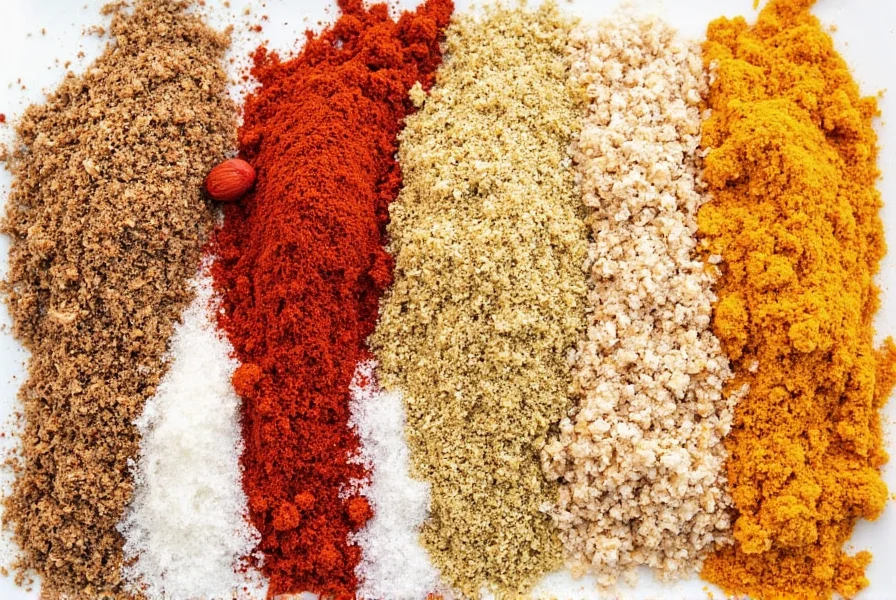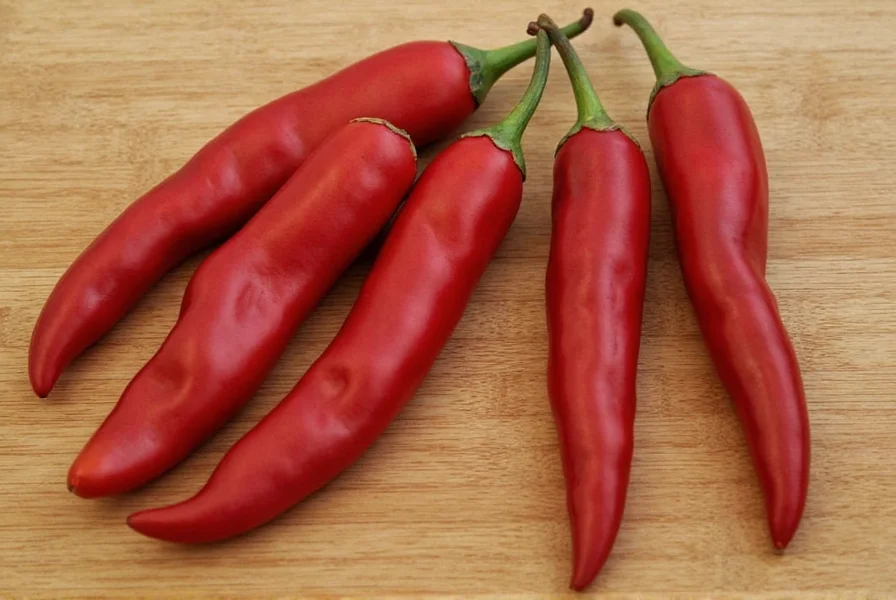Table of Contents
- Top 7 Ancho Chile Substitutes You Need to Know
- Comparison Table: Ancho vs. Alternatives
- Buying Guide for Ancho Substitutes
- How to Use These Substitutes in Your Cooking
- Storage Tips for Dried Chiles and Their Replacements
- Frequently Asked Questions About Ancho Chile Substitutes
- Final Thoughts on Finding the Right Ancho Chile Substitute
Top 7 Ancho Chile Substitutes You Need to Know
If you're out of ancho chiles, here are the top 7 substitutes that deliver similar flavor profiles and heat levels for your recipes. Each option has been carefully selected based on culinary expertise and real-world cooking applications.
- Guajillo Chiles: Slightly spicier but with a similar fruity depth (2,500-5,000 SHU).
- Mulato Chiles: Sweeter than anchos with chocolatey undertones (2,500-3,000 SHU).
- Pasilla Chiles: Earthier and more pungent; sometimes called 'Mexican negro' (1,000-2,500 SHU).
- California Wonder Bell Peppers: For mild dishes where you want sweetness without spice (0 SHU).
- Chipotle Powder (Use Sparingly): Adds smokiness and moderate heat (5,000-10,000 SHU).
- New Mexico Chiles: Great for chili-based dishes; milder than guajillos (1,500-2,500 SHU).
- Cayenne Pepper (Adjust Carefully): For those who love heat and don't mind losing some flavor complexity (30,000-50,000 SHU).
Comparison Table: Ancho vs. Alternatives
| Chile Type | Heat Level (SHU) | Flavor Profile | Best For |
|---|---|---|---|
| Ancho | 1,000–2,000 | Sweet, fruity, earthy | Mole, sauces, soups |
| Guajillo | 2,500–5,000 | Tangy, berry-like | Salsas, marinades |
| Mulato | 2,500–3,000 | Sweet, licorice, chocolate | Slow-cooked dishes, desserts |
| Pasilla | 1,000–2,500 | Earthy, prune-like | Meat dishes, stews |
| California Wonder | 0 | Very sweet, no heat | Non-spicy dishes, roasts |
| Chipotle Powder | 5,000–10,000 | Smoky, spicy | Barbecue rubs, stews |
| Cayenne | 30,000–50,000 | Burn-focused, sharp | Spicy sauces, stir-fries |
Buying Guide for Ancho Substitutes
If you're new to the world of dried chiles or looking to build a well-stocked spice cabinet, here's how to choose the best ancho substitutes based on flavor, convenience, and use case:
1. Guajillo Chiles
- Features: Vibrant red color, thin skin, moderate heat.
- Advantages: Readily available, great for traditional Mexican recipes.
- Best For: Salsas, adobo, tacos al pastor.
- Target Audience: Home cooks with some experience in Latin cuisine.
2. Mulato Chiles
- Features: Dark brown, thick flesh, sweeter than anchos.
- Advantages: Unique chocolate notes make it ideal for rich dishes.
- Best For: Slow braises, moles, dessert glazes.
- Target Audience: Advanced home cooks and chefs experimenting with flavors.
3. Pasilla Chiles
- Features: Very dark, almost black, with a wrinkled texture.
- Advantages: Adds a complex, layered taste to savory meals.
- Best For: Stews, grilled meats, vegetable roasts.
- Target Audience: Enthusiasts looking for depth in flavor profiles.
4. California Wonder Bell Peppers (Dried)
- Features: Sweet, meaty, zero heat.
- Advantages: Perfect for those avoiding spice altogether.
- Best For: Mild soups, stuffed peppers, slow-roasted veggies.
- Target Audience: Families, kids-friendly meals, health-conscious eaters.
5. Chipotle Powder
- Features: Smoked jalapeños, fine powder texture.
- Advantages: Instant flavor boost with minimal effort.
- Best For: Rubs, barbecue sauces, smoked bean dishes.
- Target Audience: Grill lovers and spice seekers.
6. New Mexico Chiles
- Features: Medium red color, slightly hotter than anchos.
- Advantages: Great for chili con carne and Southwestern dishes.
- Best For: Chili, enchiladas, salsas.
- Target Audience: Those familiar with U.S. Southwest cuisine.
7. Cayenne Pepper
- Features: Super hot, vibrant red, powdered form.
- Advantages: Shelf-stable, powerful punch of heat.
- Best For: Spicy soups, Asian-inspired dishes, fiery rubs.
- Target Audience: Heat lovers and global cuisine enthusiasts.
How to Use These Substitutes in Your Cooking
Substituting ancho chiles isn't just about matching heat levels — it's also about balancing flavor. Here are tips on how to use each alternative in real-world cooking scenarios:
For Soups & Stews
- Try: Mulato or pasilla chiles
- Tip: Toast them lightly in a dry pan before soaking to enhance their earthy aroma.
For Mole & Sauces
- Try: Guajillo or mulato chiles
- Tip: Blend with almonds or sesame seeds to recreate the creamy richness anchos often provide.
For Grilling & BBQ
- Try: Chipotle powder
- Tip: Mix with paprika, garlic powder, and brown sugar for a balanced rub.
For Mild, Sweet Dishes
- Try: Dried California Wonder peppers
- Tip: Pair with roasted tomatoes and carrots to add body without heat.
Storage Tips for Dried Chiles and Their Replacements
Dried chiles are shelf-stable but lose potency over time. Here's how to keep them fresh and flavorful:
- Store whole dried chiles in airtight bags or glass jars away from light and moisture.
- Grind only what you need to preserve freshness and oil content.
- Label containers clearly with the type and date purchased.
- Avoid storing near strong-smelling spices like cumin or curry powder.

Frequently Asked Questions About Ancho Chile Substitutes
Here are answers to common questions about replacing ancho chiles in your recipes:
What's the closest substitute for ancho chiles?
Guajillo chiles are generally considered the closest substitute for ancho chiles. They have a similar fruity, slightly sweet profile though they're a bit spicier (2,500-5,000 SHU compared to ancho's 1,000-2,000 SHU). Mulato chiles are also excellent substitutes with their sweet, chocolatey notes, though they're slightly less common in stores.
Can I use regular chili powder instead of ancho chiles?
Standard chili powder is a blend of spices (often including cumin, garlic powder, and oregano) with some heat, but it won't replicate the unique flavor of ancho chiles. For a closer substitute, look for pure ancho chile powder or make your own by grinding dried ancho chiles. If you must use regular chili powder, use half the amount called for and supplement with a bit of smoked paprika for depth.
How do I make a homemade ancho chile substitute?
For a quick homemade substitute, combine 1 teaspoon smoked paprika + 1/4 teaspoon cayenne pepper + 1/4 teaspoon brown sugar. This mimics the sweet-smoky profile of ancho chiles. For a more complex substitute: toast and grind equal parts guajillo and mulato chiles, then add a pinch of cinnamon and cocoa powder to enhance the chocolate notes.
Can I substitute fresh peppers for dried ancho chiles?
Yes! Since ancho chiles are dried poblanos, fresh poblanos are the direct fresh counterpart. However, note that dried chiles have concentrated flavor and different texture. For every dried ancho, use 2 fresh poblanos. Roast the fresh poblanos, remove skins and seeds, then puree for sauces. The flavor won't be identical (drying creates complex compounds), but it's the closest fresh option.
Are ancho chile substitutes gluten-free?
Whole dried chiles (guajillo, mulato, pasilla) are naturally gluten-free. However, pre-ground chile powders may contain anti-caking agents that could include gluten, so always check labels if you have gluten sensitivity. When making your own substitutes from whole dried chiles, you can be certain they're gluten-free.
How much substitute should I use for one ancho chile?
This depends on the substitute: - For guajillo/mulato/pasilla: Use 1:1 ratio by weight - For chipotle powder: Use 1/4 teaspoon per ancho chile - For dried California peppers: Use 1.5x the amount of anchos (they're milder) - For cayenne: Use 1/8 teaspoon per ancho chile (then adjust to taste) Always start with less, taste, and adjust - heat levels vary between batches.
Can I combine different substitutes for better flavor?
Absolutely! Professional cooks often blend chiles for complex flavors. Try combining equal parts guajillo and mulato for a substitute that captures both the fruitiness of guajillo and the chocolate notes of mulato. For a smoky-sweet profile, blend 2 parts pasilla with 1 part chipotle powder. Just be mindful of cumulative heat levels when combining spicier varieties.
Final Thoughts on Finding the Right Ancho Chile Substitute
You don't have to panic when your pantry runs low on ancho chiles. With this guide, you're now equipped to confidently swap them out for other chiles or spices depending on your flavor goals and heat tolerance.
Whether you're cooking a classic mole or throwing together a quick taco night dinner, there's a substitute that fits the bill. Remember: flexibility is key in the kitchen. So next time you reach for an ancho chile and come up short, take it as a chance to explore something new and exciting.
Now go forth — spice wisely!











 浙公网安备
33010002000092号
浙公网安备
33010002000092号 浙B2-20120091-4
浙B2-20120091-4